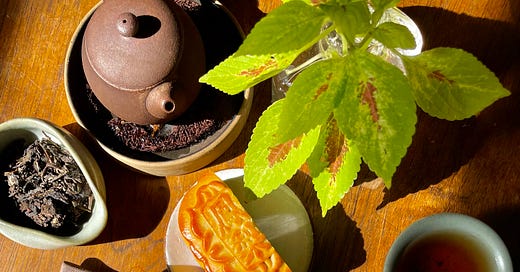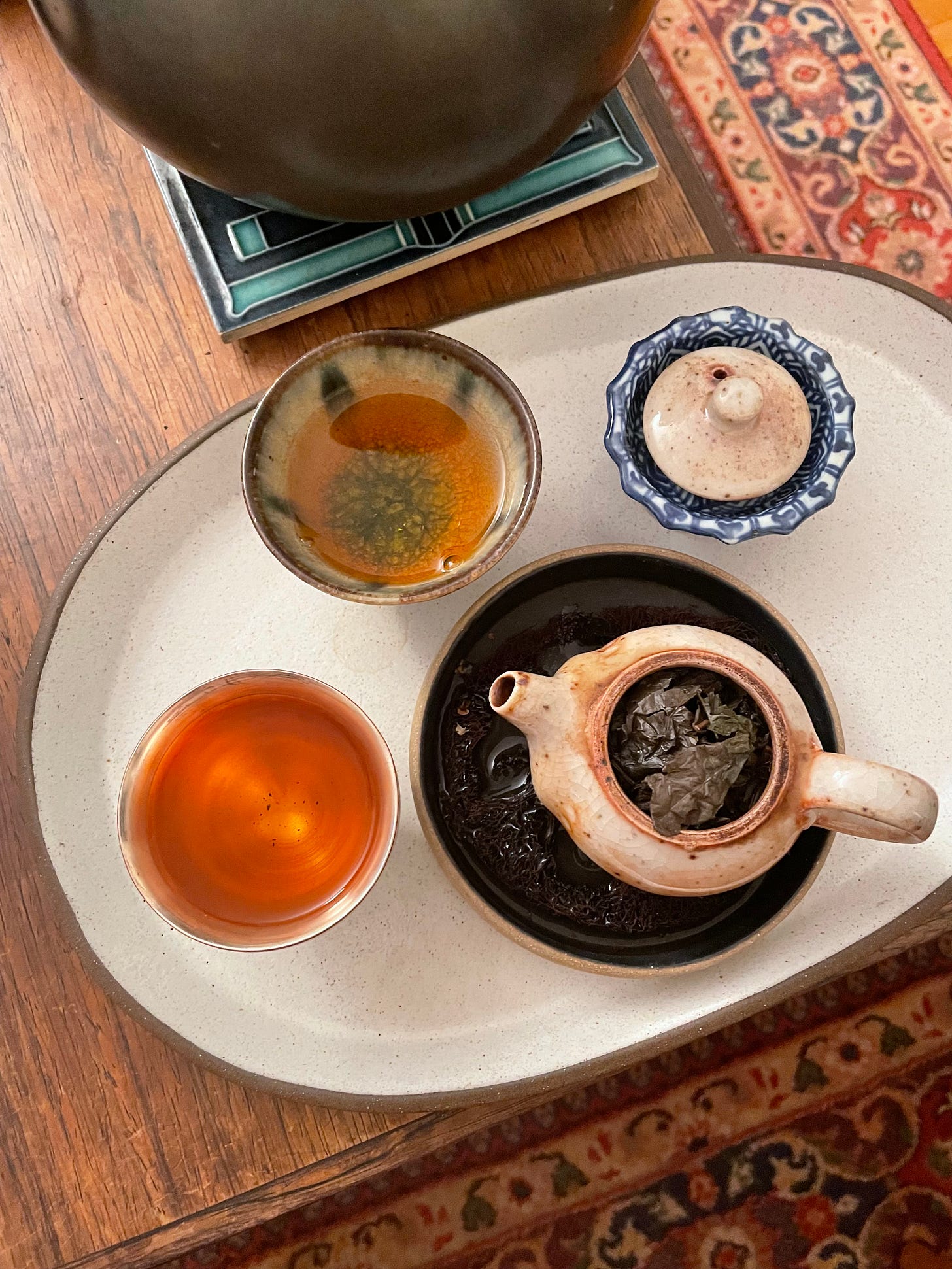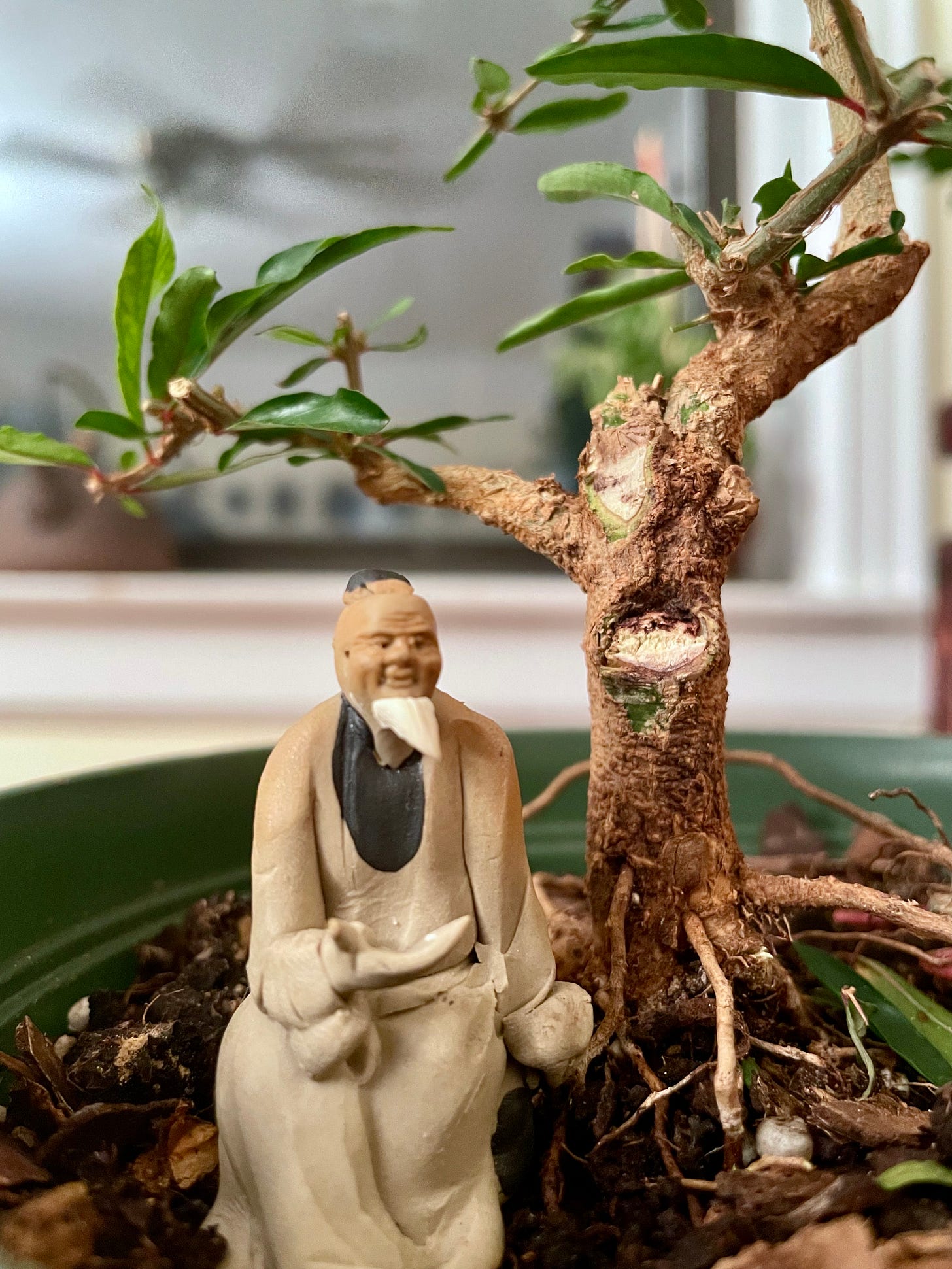In certain nerdy echelons of tea drinking there is a concept called cha xi. Loosely translated as “tea performance,” cha xi is what Sandra Lee would consider a tablescape: the teaware, fabric, and ornamental knick knacks used to dress a tea table for brewing session. It’s the kind of posh move one makes when looking to show off to their tea nerd guests, or in honor of a special (read: $$$$$) tea that’s worth some ceremony.
Are we catching up with an old friend on a bright spring day? Discussing heavy topics with a colleague? Cha xi sets the mood. The practice is most active in Taiwan, a country that draws on Chinese and Japanese tea traditions as well as a sophisticated homegrown tea culture.
“In Taiwan, the aesthetic pleasure of a tea preparation has been influenced by the Japanese sense of presentation of their tea ceremonies,” Stéphane Erler writes on his Tea Masters blog. “The seasons play a strong part in these displays.” Erler lives in Taiwan, where he sells tea and assembles impressive cha xi. He explains on his blog that in addition to highlighting the seasons, cha xi should highlight a tea itself, going so far as to enhance one’s appreciation of the drink.
For the brewer, the Cha Xi is his world for the time he's brewing tea. Each item has its function, has its place in his display. Depending one the tea that is chosen, we choose the wares that will best bring out the flavors, mood of this tea.
Most of my tea drinking occurs alone, so my own cha xi usually looks like the casual setup above. But I can clean up when the situation calls for it.
In other nerdy echelons of tea drinking, tea isn’t just a drink. It’s a mechanism for connecting with others and exploring the self. Tea is sometimes used in Zen activities as a focal point for meditation. By making yourself aware of all the ways you physically experience the tea, you sketch an outline of yourself through your perceptions.
Good tea can take you places. I’m intrigued by the ways cha xi can heighten that journey, including the role of plants.
Over recent weeks I’ve repeatedly found myself selecting one companion tree or another to hang out with me on a solitary evening. While I’m working, eating, reading, or watching a show, there’s the tree cheering up my field of view. A Wilson to my Tom Hanks. Doing this gives me an extended opportunity to study a tree from multiple angles. Really regard the tree and consider its future.
Tea drinking is likely happening during any of these activities. When a good tea sets the tone, it makes contemplation of that tree all the better. I don’t mean this in any specific instrumental way; this isn’t a nootropic theanine lifehack. It’s more that I think there’s something to be said for one’s pursuits enhancing and expanding one’s view of the world. This happens all the time whether we realize it or not. Perhaps crossing two separate practices (tea and bonsai) can help make me more aware of it.
This pomegranate has been a frequent companion tree, and only after hours of on-and-off caffeinated contemplation did I decide to commit to its current diminutive design. I’ve spent even more time with it since removing most of its foliage, and I’m convinced I made the right decision. Now the companion tree acts as a recurring reminder of a job well done. In a dumb physical way, spending time with it brings my bonsai practice into more of my life.
As I understand the early history of bonsai, which is to say poorly, one of the theoretical goals was to bring a piece of nature close to home. This wasn’t just about greenery. For some practitioners, the miniaturizing effect of a bonsai or penjing landscape opened a metaphysical gateway to the natural world, allowing the viewer to appreciate nature’s harmony while accessing its energetic potential. Ikebana, the Japanese art of flower arrangement, involves similar ideas of using formally composed elements of nature to express a facet of its raw, blinding beauty.
These are the same aesthetics that influenced Taiwanese tea tradition, which brings us full circle. Using cha xi to enhance tea to heighten consideration of bonsai, now back to cha xi.
It will probably not surprise you to learn that there is a small but significant overlap of tea nerds and bonsai nerds out there, mainly in Taiwan.
A tiny cohort for an attempt to show off, but one that would uniquely appreciate the role of a good bonsai in cha xi. There are indeed cha xi that incorporate bonsai, and I think there’s potential here for further study. I’ll report back if I turn up anything noteworthy.
All of which is to say…companion trees! Give them a try! Maybe they’ll take you places, too.
Tree reading
Speaking of Japanese art forms, here’s an iron kettle made in honor of the Event Horizon Telescope’s photo of the black hole at the center of our galaxy. [Twitter]
A feature on Tulsi Gowind Gowda, the octogenarian who is “bringing India’s forests back to life.” [New York Times]







You are the first other tea nerd/bonsai practicioner I've encountered. Where does the club meet?